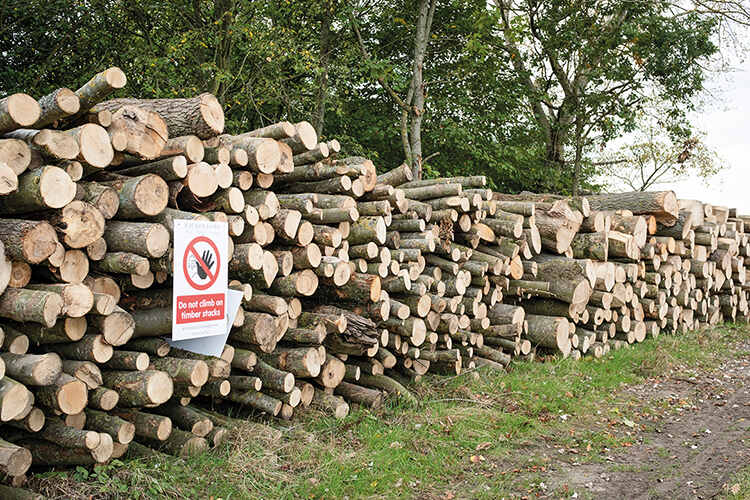
Using timber for housing could save 106 gigatonnes of carbon emissions, but challenges lie in having a sustainable supply
By
In June, architects, engineers and local authority representatives from around the UK assembled at the annual FOOTPRINT+ property conference to discuss the future of British construction. Alongside the panels and presentations on emerging technologies and state-of-the-art construction techniques (from heat networks to the latest developments in decarbonising concrete), a significant portion of the events focused on a much more ordinary building material: wood.
‘Timber has an exciting future,’ says David Hopkins, managing director at Timber Development UK. ‘It is the single most important material when it comes to decarbonising construction. That is no exaggeration.’
In a paper published last year, researchers at the Potsdam Institute for Climate Impact Research estimated that by building mid-rise wooden residences to house growing urban populations, around 106 gigatonnes of additional carbon dioxide emissions could be prevented through 2100.
Timber certainly has an important role to play in achieving net zero, agrees Marlene Cramer, a researcher at Edinburgh Napier University’s Centre for Wood Science and Technology. ‘The challenge lies in securing a sustainable global supply.’ To that end, Cramer and her colleagues are in the process of assessing the suitability of English hardwood trees – species such as oak, beech and sweet chestnut – for use in construction. The project, which is funded by the Forestry Commission, is called Building from Britain’s Woodlands.
Increasing the production of homegrown timber might seem at odds with the UK’s targets on both tree planting and biodiversity, but as Cramer points out, we already harvest nearly one million tonnes of hardwood a year. However, instead of using it for construction, we burn it. An estimated 85 per cent of the hardwood harvested in the UK is used for energy production – in addition to the 7.5 million tonnes of wood pellets imported annually from other countries for biomass heating.

We should be putting the resources we have to better use, she argues. ‘Why are we burning virgin timber? The answer is that we don’t really know how to use hardwood and as a result we’re not using the material we have very efficiently.’
Currently, most of the timber grown in the UK comes from softwood species: spruce, pine and larch. These trees tend to be faster growing but, more importantly, they grow tall and straight, and yield more timber. The hardwood timber that we do use in construction is largely imported from Estonia and the USA, sources upon which we’ve relied since the 1700s (following the depletion of our own woodlands during the 1600s and the subsequent exploitation of the resources of former British colonies).
To date, too little research has been done on the properties of British hardwood timber to determine its potential for use in construction. ‘People say that UK timber is not good enough to use in construction. That’s just not true,’ says Cramer. At the moment, her team is in the process of testing six UK tree species for desired characteristics such as strength, stiffness and density, while another team works on which products may be suitable for which wood.
The end goal is to not only provide low-carbon alternatives to concrete and steel, but to help end our reliance on imported construction materials. According to the latest report by the Forestry Commission, the UK is now the world’s second-largest net importer of timber products after China. Cramer calls this level of consumption simply outrageous. ‘If every country imported like the UK does, where would all the timber come from?’ she asks.




